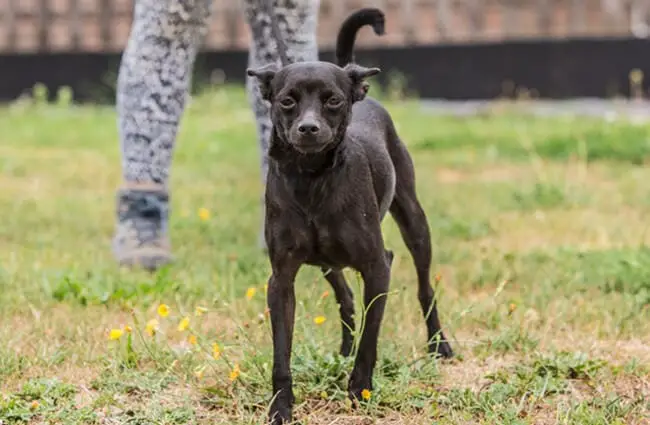The German Pinscher is a breed steeped in history and brimming with personality. Often described as a “small Doberman,” this energetic and intelligent dog has a story that stretches back centuries, and a temperament that keeps owners engaged and entertained. This comprehensive guide explores everything potential owners need to know about this remarkable breed.

A Glimpse into History
The German Pinscher’s origins trace back to the 18th century in Germany. They developed naturally as working dogs on German farms rather than being deliberately bred in the modern sense. Their ancestors include the old German Pinscher and the standard Schnauzer, and they served as ratters, watchdogs, and general farm hands. Their primary roles were pest control, guarding property, and assisting with livestock.
The breed’s popularity waned in the late 19th and early 20th centuries, and it nearly faced extinction after World War I. Dedicated breeders worked tirelessly to revive the breed, and today the German Pinscher thrives. Its close relationship with the development of the Doberman Pinscher— the Doberman was refined using German Pinscher bloodlines—testifies to its robust genetics and useful qualities.
Physical Characteristics
German Pinschers are small to medium‑sized dogs, known for their athletic build and confident stance. They typically stand between 17 and 20 inches tall at the shoulder and weigh between 25 and 45 pounds. A well‑proportioned German Pinscher possesses a square build, reflecting their historical role as agile working dogs.
The breed’s coat is short, dense, and smooth. Common colors include solid red, black, black and rust, chocolate and rust, and sometimes diluted shades. While color preferences exist, all these colors are accepted in breed standards. Their ears are traditionally cropped and their tails docked, although these practices are becoming less common and are illegal in some regions.

Temperament and Personality
German Pinschers are lively, intelligent, and somewhat independent. They require regular exercise and mental stimulation. Their intelligence makes them highly trainable, but their independent streak means they benefit from consistent, firm, and positive reinforcement training methods.
They are naturally watchful and protective, making them excellent watchdogs. However, this protective instinct can sometimes translate into aloofness or suspicion toward strangers. Early socialization is therefore crucial to help them develop into well‑adjusted companions. They are playful and affectionate with their families, often forming strong bonds with their owners.
Expect a dog with a strong prey drive. They may chase smaller animals, so careful supervision is necessary when outdoors. They also possess a seemingly endless supply of energy and enjoy activities like fetch, agility training, and long walks.
Caring for Your German Pinscher
Exercise Needs
German Pinschers require a significant amount of exercise, ideally at least one to two hours per day. This can include brisk walks, runs, playtime in a securely fenced yard, or participation in dog sports. A bored German Pinscher can quickly become destructive, so providing adequate physical and mental stimulation is essential.
Grooming
Their short coat is relatively easy to groom. Weekly brushing will help remove loose hair and maintain a healthy shine. They do shed moderately year‑round. Regular nail trims, ear cleaning, and dental care are also important aspects of their grooming routine.

Training and Socialization
Early socialization is paramount for German Pinschers. Expose them to a wide variety of people, places, and situations from a young age to help them develop into well‑adjusted adults. Positive reinforcement training methods work best with this intelligent breed. They enjoy learning and responding to challenges, but require a confident and consistent trainer.
Due to their protective instincts, obedience training is crucial. This helps ensure they respond reliably to commands and can be controlled in various situations. Consider enrolling in obedience classes or working with a professional dog trainer.
Dietary Needs
A high quality dog food formulated for medium sized active breeds is recommended. The amount of food will depend on the dog’s age, weight, and activity level. Avoid overfeeding, as this can lead to obesity. Providing fresh water at all times is essential.
Health Considerations
German Pinschers are generally a healthy breed, but they are prone to certain health conditions. These include hip dysplasia, progressive retinal atrophy (PRA), and Von Willebrand’s disease (a bleeding disorder). Responsible breeders will screen their breeding dogs for these conditions to minimize the risk of passing them on to their puppies.
Regular veterinary checkups are essential for maintaining your German Pinscher’s health. Early detection and treatment of any health problems can significantly improve their quality of life.

Is a German Pinscher Right for You?
The German Pinscher is a fantastic breed for the right owner. They thrive in active households where they receive plenty of exercise, mental stimulation, and affection. They are intelligent, loyal, and protective companions. However, they are not the best choice for first‑time dog owners or those who cannot commit to providing them with the training and socialization they need.
If you are an experienced dog owner looking for a lively, intelligent, and devoted companion, the German Pinscher may be the perfect breed for you. Be prepared to provide them with a stimulating environment, consistent training, and plenty of love and attention.

Interesting Facts
- German Pinschers are known for their “smiling” faces due to the shape of their lips.
- They were once used as carriage dogs, running alongside horse‑drawn carriages.
- Despite their relatively small size, they are surprisingly strong and agile.
- Their coat is naturally water‑resistant.
- They are highly adaptable and can thrive in various climates.
In conclusion, the German Pinscher is a truly remarkable breed with a rich history, a vibrant personality, and a loyal heart. Their intelligence, energy, and protective instincts make them exceptional companions for experienced dog owners willing to meet their needs.






![Red Angus Closeup of a beautiful Red Angus cowPhoto by: U.S. Department of Agriculture [pubic domain]https://creativecommons.org/licenses/by/2.0/](https://animals.net/wp-content/uploads/2020/03/Red-Angus-4-100x75.jpg)

